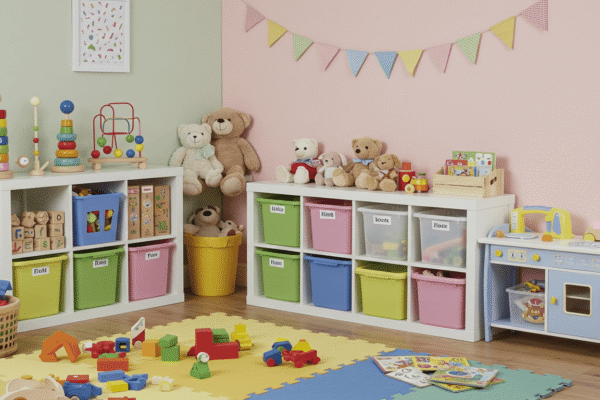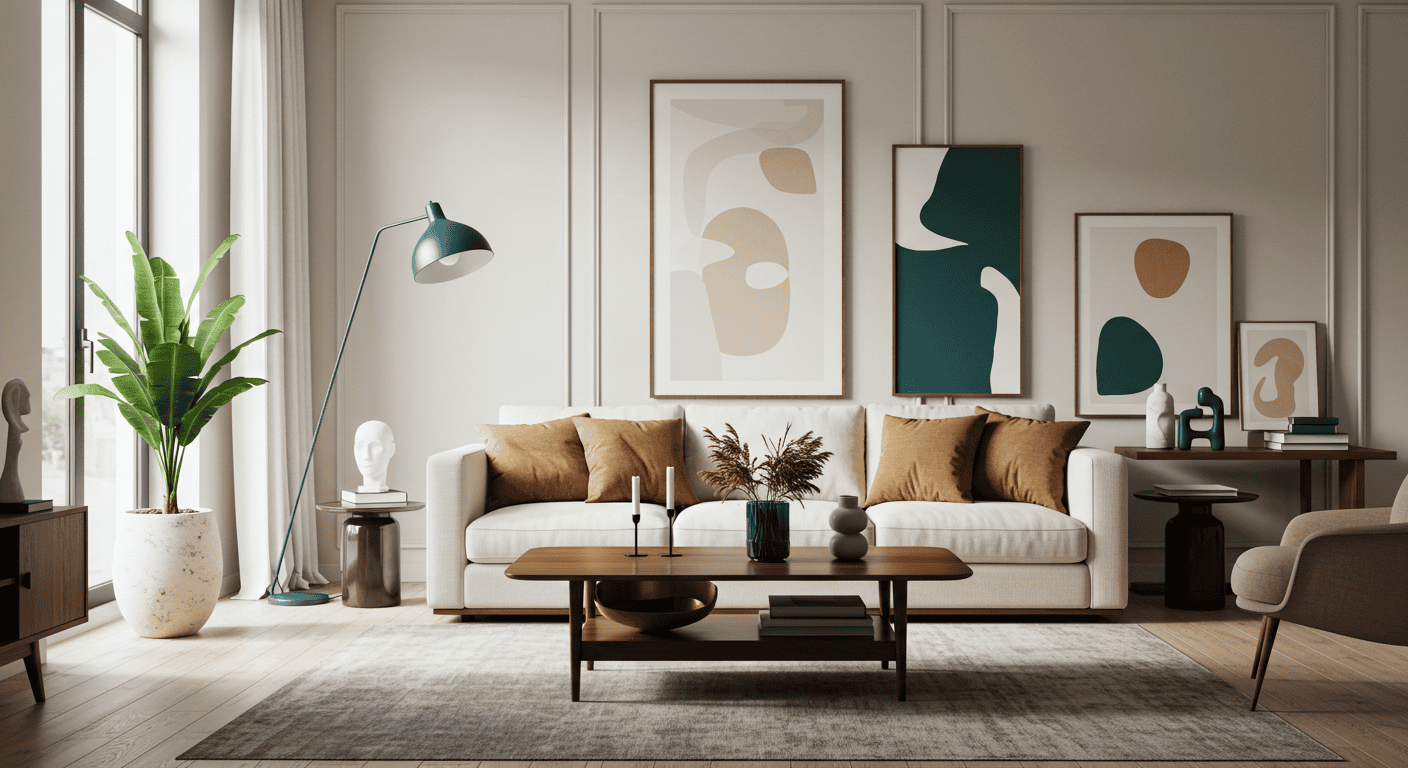Rule of Three in Home Decor is a simple yet powerful design principle that can transform any space from ordinary to visually stunning. By grouping items in sets of three, you create a natural sense of balance, harmony, and visual interest that draws the eye and feels pleasing without being overwhelming. Whether you’re styling your living room, bedroom, or kitchen, understanding how to use the rule of three can help you achieve a curated, elegant look with minimal effort. In this post, we’ll explore creative ways to apply this timeless principle, backed by practical tips and examples to inspire your next home decorating project.
What Is the Rule of Three in Home Decor?
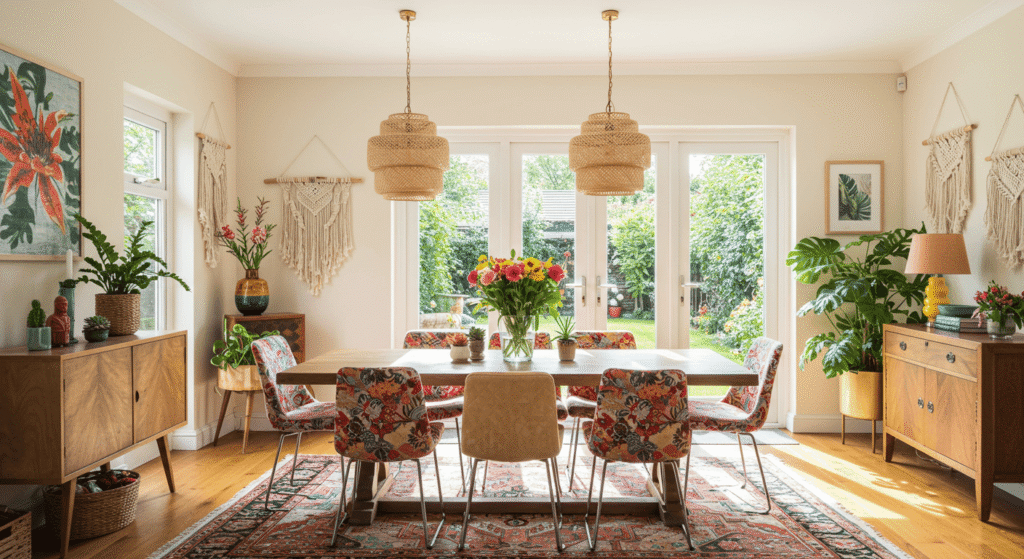
The rule of three in home decor is a design guideline that encourages arranging objects in groups of three to create a visually pleasing and balanced composition. This simple principle is widely used by interior designers to add rhythm and interest to a space without overwhelming it. Grouping decor elements in threes taps into a natural aesthetic sense, making arrangements feel complete and harmonious. Understanding this concept can help you style your home with greater confidence and creativity.
The Psychology Behind It
Humans are naturally drawn to odd numbers, especially the number three, because they create a sense of movement and intrigue. Unlike even-numbered groupings, which can feel static or predictable, sets of three provide a dynamic balance that keeps the eye engaged. This attraction to triplets has roots in both psychology and nature, where patterns of three are often found, such as in storytelling, art, and design. Using the rule of three in your decor leverages this subconscious preference, making your space feel more inviting and thoughtfully arranged.
Rule of Three vs. Symmetry
While the rule of three promotes a dynamic and engaging visual balance, symmetry focuses on creating equal and mirrored arrangements. Symmetrical designs are formal and orderly, often used in classic architecture and traditional furniture layouts. In contrast, the rule of three encourages asymmetry and variation, which adds personality and a modern touch to decor. Both approaches have their place in design, but the rule of three tends to foster a more relaxed and creative atmosphere by avoiding rigid uniformity.
Quick Comparison Table
| Design Style | Key Trait | Common Use |
|---|---|---|
| Rule of Three | Visually engaging, dynamic | Vignettes, decor groupings |
| Symmetry | Balanced and formal | Furniture layout, architecture |
This table highlights the fundamental differences between the two design styles, helping you decide when to apply each technique in your home.
Why the Rule of Three Works So Well in Design
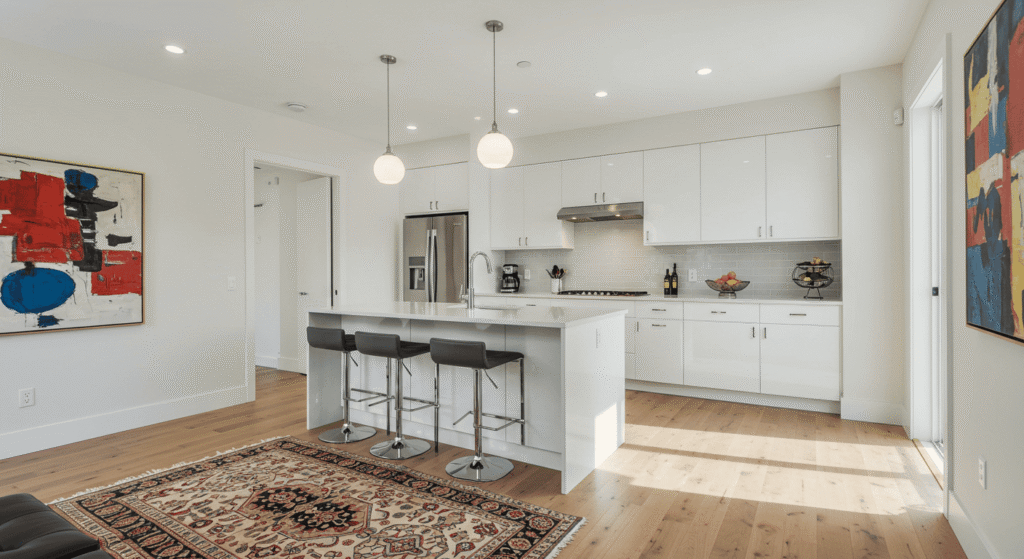
The rule of three is a fundamental principle in design because it naturally creates a sense of balance and visual interest. When elements are grouped in threes, the arrangement feels complete and intentional, guiding the viewer’s eye smoothly across the space. This technique helps avoid clutter while ensuring the decor doesn’t appear too sparse or monotonous.
Visual Balance and Movement
Grouping elements in sets of three introduces a natural rhythm that encourages the eye to move comfortably through the arrangement. Instead of being static or overly symmetrical, triads create a dynamic flow, making the overall design feel lively yet balanced. This rhythm helps highlight key pieces in your decor, giving each item its own moment while maintaining cohesion within the group.
Depth and Dimension
Beyond just the number of items, the rule of three relies heavily on varying height, size, and texture to add depth to a display. By mixing tall, medium, and short objects or combining smooth and rough textures, you create layers that bring dimension to your styling. These variations prevent the grouping from looking flat or boring, adding richness and complexity that elevate the overall aesthetic.
Example Table – Styling Objects in Threes
| Item Grouping Example | Varying Trait | Impact |
|---|---|---|
| 3 Candles | Height | Creates flow |
| 3 Picture Frames | Size & color | Adds character |
| 3 Decorative Bowls | Texture | Adds visual weight |
This table illustrates how applying variation within groups of three enhances the visual appeal and balance in your decor.
Applying the Rule of Three by Room
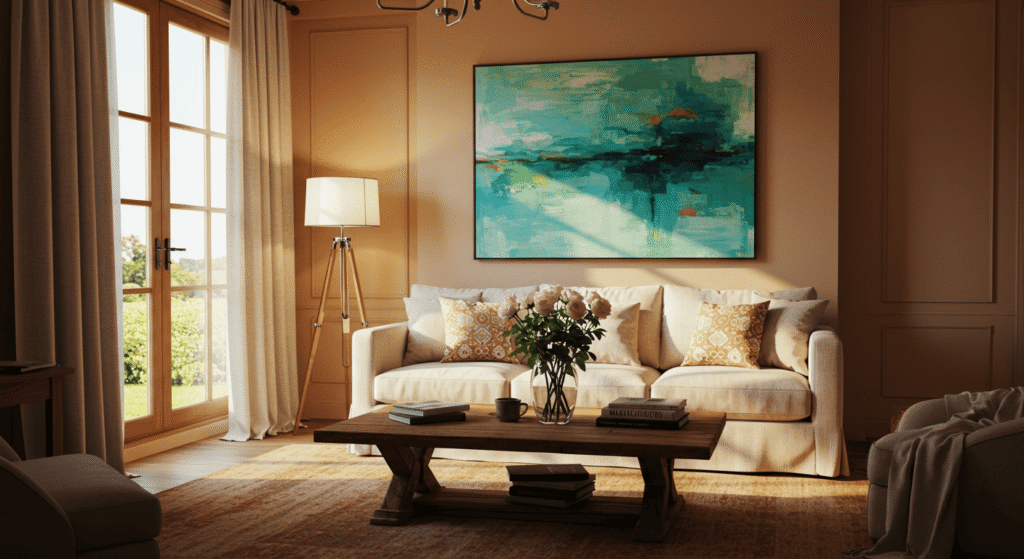
Using the rule of three effectively involves tailoring it to different spaces in your home. Each room has unique features and functions, so applying this design principle with thoughtful consideration can enhance both style and comfort.
Living Room
In the living room, the rule of three can be applied through accessories like throw pillows arranged on a sofa, decorative trays on the coffee table, or a grouping of wall art pieces. Combining different textures, shapes, and sizes in these groupings creates a focal point that draws attention without overwhelming the space.
Kitchen
The kitchen offers plenty of opportunities to use the rule of three on open shelves, countertops, or islands. Grouping three jars filled with dry goods, arranging three decorative bowls, or styling three small plants can add charm and cohesion to this functional area while maintaining a clean and organized look.
Bedroom
In the bedroom, applying the rule of three can bring balance and serenity. Try styling bedside tables with three items of varying heights, layering bedding with three different textures or colors, or hanging three art prints above the bed. These simple groupings create a curated, restful environment that feels intentional and inviting.
Practical Room Examples
| Room | Example Use of Rule of Three |
|---|---|
| Living Room | 3 vases of different heights on mantle |
| Kitchen | 3 jars on counter with dry goods |
| Bedroom | 3 art prints above bed |
This table provides practical ideas for incorporating the rule of three in common home areas, making it easier to visualize and apply the concept.
Styling Tips: Varying Height, Shape, and Texture
Mastering the rule of three goes beyond simply grouping items together—it requires thoughtful variation in height, shape, and texture. These elements bring life and depth to your arrangements, ensuring they captivate rather than bore.
Why Uniformity Is Boring
When objects are too similar in size, shape, or finish, the display can feel flat and uninspired. Uniformity lacks the contrast needed to create interest and dimension. Introducing variation adds energy and draws the eye, preventing your decor from feeling monotonous or static. Contrast is key to a dynamic and engaging design.
Creating Visual Peaks
One of the easiest ways to achieve balance is by arranging objects in a sequence of tall, medium, and small heights. This creates “visual peaks” that guide the viewer’s gaze smoothly across the grouping. The tallest piece acts as a focal point, while the other items support and complement it, resulting in a cohesive and harmonious display.
Styling Tips at a Glance
| Element | What to Vary | Pro Tip |
|---|---|---|
| Height | Tall to short | Use books or risers to elevate objects |
| Shape | Round vs. angular | Mix soft curves with sharp edges for balance |
| Texture | Matte, glossy, rough | Combine different finishes to add richness |
This table summarizes key styling tips to keep your decor fresh and visually appealing when applying the rule of three.
When the Rule of Three Doesn’t Work
While the rule of three is a versatile and effective design tool, it’s not always the best choice for every space or situation. Understanding when to set it aside can help you create a more appropriate and harmonious environment.
Spaces That Need Symmetry Instead
Certain areas, like formal rooms, entryways, or spaces with balanced furniture layouts, often benefit more from symmetry than from the rule of three. Symmetrical arrangements convey order, stability, and elegance, which are important in these settings. For example, matching lamps on either side of a sofa or a pair of identical chairs flanking a fireplace create a calm, structured look that the rule of three’s asymmetry might disrupt.
Overcrowding With Threes
It’s important to recognize when grouping items in threes starts to feel cluttered rather than curated. Overusing the rule can overwhelm a space, making it appear busy and chaotic. In these cases, less is more—opt for fewer, carefully selected pieces to maintain a clean and intentional style. Balancing simplicity with interest is key to successful decor.
Rule of Three in Wall Art & Gallery Layouts
The rule of three can be a powerful guide when arranging wall art and creating gallery walls. Thoughtful groupings not only enhance visual appeal but also bring cohesion to your space, making your walls a focal point rather than an afterthought.
Picture Groupings
Common ways to apply the rule of three in wall art include horizontal triptychs, where three images are evenly spaced side by side, stacked frames arranged vertically, or staggered layouts that form a loose triangle. Each arrangement offers a unique way to balance variety and unity, helping to fill wall space attractively without overcrowding.
Using Negative Space
Negative space—the empty area around your art—plays a crucial role in amplifying the impact of the rule of three. Leaving enough breathing room between pieces prevents the grouping from feeling cluttered and allows each item to stand out. Well-considered spacing enhances the rhythm and flow, reinforcing the sense of balance.
Gallery Wall Layout Ideas
| Layout Style | Description | Tip |
|---|---|---|
| Horizontal Trio | Three equally spaced images | Great above a sofa or bed |
| Asymmetrical Set | Different sizes, triangle form | Keep consistent spacing |
| Stacked Vertical | Three aligned vertically | Works well in narrow wall space |
This table outlines popular gallery wall layouts using the rule of three, offering practical ideas for elevating your wall decor.
Advanced Techniques: Rule of Three Meets Color & Lighting
Once you’ve mastered the basics of the rule of three in arranging objects, you can elevate your design by integrating color and lighting. These elements work hand in hand with grouping principles to create spaces that feel balanced, vibrant, and inviting.
Triadic Color Schemes
A triadic color scheme involves selecting three colors that are evenly spaced on the color wheel, creating a balanced yet dynamic palette. Applying this concept to your decor accessories—such as cushions, vases, or throws—can enhance the visual harmony established by the rule of three. This approach ensures that your space has a cohesive color story without feeling monotonous or chaotic.
Light Layering in Threes
Lighting is another powerful tool to apply the rule of three. Using a combination of task, ambient, and accent lighting layers a room with different moods and functionalities. Task lighting focuses on specific areas like reading nooks, ambient lighting provides overall illumination, and accent lighting highlights decorative features. Together, these three layers create depth and warmth that complement your styling choices.
Using Color & Light Together
| Technique | Element Applied To | How It Supports Balance |
|---|---|---|
| Triadic color scheme | Accessories | Keeps energy harmonious |
| 3 light layers | Room zones | Enhances depth and mood |
This table highlights how combining color theory and lighting with the rule of three can bring sophistication and balance to your interior design.
Quick-Start Guide: Try the Rule of Three in Your Home Today
Implementing the rule of three doesn’t require a complete redesign or new purchases. With a few simple adjustments and some creativity, you can start enhancing your space using items you already own. This guide offers practical, beginner-friendly ideas to help you experiment and enjoy the process of styling your home.
Beginner-Friendly Decor Groupings
Look around your home for everyday objects that can be grouped in threes. Think of things like books, candles, plants, or decorative bowls. By combining these in varying heights, shapes, and textures, you can create eye-catching displays without the need for new decor. This approach makes the rule of three accessible and easy to apply for anyone.
Weekly Room Challenge
To make styling manageable and fun, try focusing on one room per week. Start with a small area and experiment with different groupings following the rule of three. Observe what feels balanced and adjust as needed. This step-by-step method encourages creativity without overwhelming you, turning home styling into an enjoyable routine.
3-Day Styling Challenge
| Day | Room | Challenge |
|---|---|---|
| 1 | Entryway | Style a console with 3 decor items |
| 2 | Living Room | Create a coffee table grouping |
| 3 | Kitchen | Style 3 canisters or vases on the counter |
This quick challenge provides a simple starting point for applying the rule of three across different rooms, helping you build confidence and see the impact of this design principle firsthand.
Mastering the Rule of Three in Home Decor for Lasting Impact
The rule of three in home decor is a timeless and versatile design principle that can instantly elevate any space. By thoughtfully grouping items in threes and varying their height, shape, and texture, you create balanced, dynamic arrangements that feel both intentional and inviting. Whether you’re styling your living room, kitchen, or bedroom, embracing this rule helps simplify decorating while maximizing visual interest. With practice and creativity, mastering the rule of three will transform your home into a harmonious and stylish sanctuary you’ll love.






